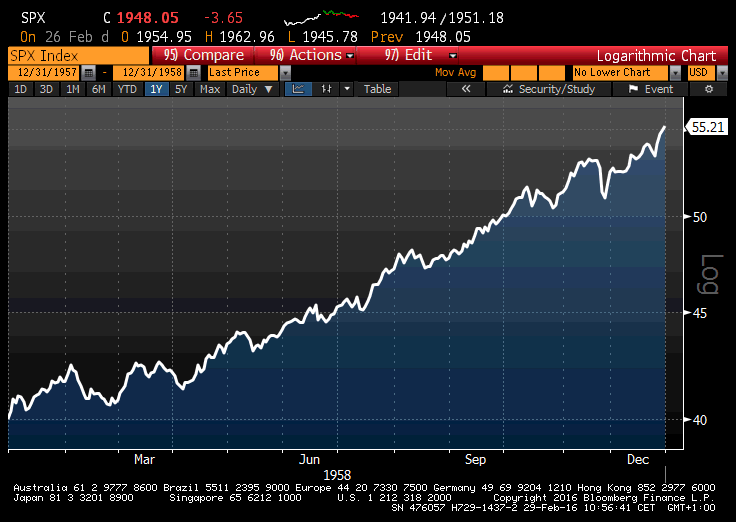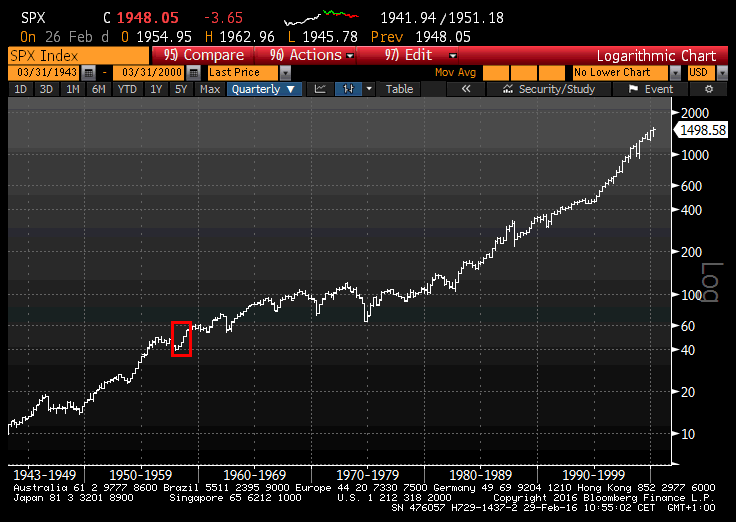SHORT-TERM ALLURE
Watch out for the good looking ideas.
As you can see in this 40-second clip from a very popular series of British TV ads, Sergei is in a serious pickle. While you ponder whether he made the right decision (do it alone: my wife and I had a fight on this), I’d like to interest you in another question: what type of investment should we favor from a temporal point of view? Should an investor seek quick short-term (significantly positive) opportunities or investments that behave as long-term wealth accumulators (while enduring some market volatility)?
An example of a short-term opportunity, among an almost infinite number, may look like the following graph of the S&P 500 in 1958:
If this were a trade, we could characterize it as follows: it produced a total return of 38% in 12 months (in with $100, out with $138; wow!), which is almost 3.5 times the long-term return of the market (re-wow!); and it did so in a smooth progression throughout the year (neat); and this result was obtained with a selection of solid blue-chip equity investments (sounds good); and… now what (oops)? Yes, now what do you do with the money? Unless you have the ability to spot similar opportunities every year anywhere in the investment space you have a problem (see The Shotgun Approach to Investing). For the record, I personally don’t know anyone who can do that.
A typical long-term wealth accumulator, on the other hand, may look something like this (red square = previous graph in context):
Looking at the graph this investment produced a total return of over 13% per year (in with $100, out with more than $106,000; ok!) though it took 57 years to do this (are you kidding me?); it does not exactly have a smooth path, with several hiccups of 20% or more and even a 15-year period in 1967-1982 with almost no nominal price return (in real terms it was a disaster; yuk!); it still involves only blue-chip shares (good); and… it comes with no “now what” factor (how boring). If you do not want or cannot stay invested for the whole period, you should know there are reliable measures that can protect you at least partially from the worst drawdowns. But you can’t escape the fact that you need to play this game with patience and fortitude, deploying your investment program over years, not months or quarters. (See this old Washington Post article for a different twist on “patience and fortitude”.)
What if your reservoir of stamina in investing only goes as far as keeping you cool for a year or less? You are in a bind because, as we said, investment “strategies” targeted to short-term horizons don’t benefit from (any?) replicable processes you can rely on. This means that you are also unlikely to solve the issue by entrusting your money to others, since their chance of possessing a better mouse trap is very low at best.
Long-term friendship, even with the alternative faced by Sergei, is irreplaceable.
Photo sources: http://www.irishexaminer.com/examviral/celeb-life/nicole-kidman-could-prompt-christmas-split-for-meerkats-aleksandr-and-sergei-372714.html; Bloomberg.


